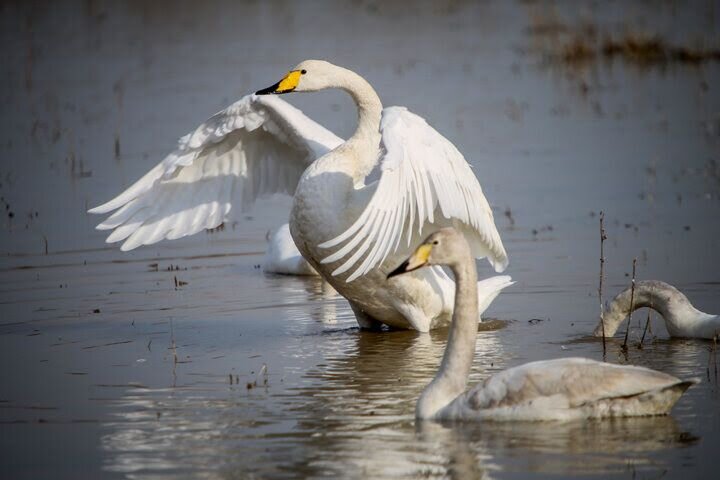Kani Barazan intl. wetland hosting migratory swans

TEHRAN –The first flock of migratory swans was observed in the Kani Barazan international wetland and wildlife sanctuary in the northwest of the country.
The wetland is located near the city of Mahabad, West Azarbaijan province. Stretching to 907 hectares, Kani Barazan wetland is home to various bird species including, flamingo, little cormorant, great white pelican, stilt, sternidae, great crested grebe, graylag goose, lesser white-fronted goose, heron, and common shelduck.
These migratory swans have entered the wetland for resting and feeding. Their migration is expected to continue in the coming days, IRNA reported.
The presence of migratory swans in the Kani Barazan wetland and wildlife sanctuary indicates the favorable condition of the wetland in terms of water quality, food access, and its safety.
Its high capabilities, diverse vegetation, and the annual migration of 200,000 species of birds have made this wetland a precious bird-watching site for nature lovers.
Migratory birds in Kani Barazan for wintering
In January, the wetland hosted over 30,000 migratory birds for wintering.
The unprecedented entry of migratory birds into the wetland was due to the revival of parts of the wetland, the existence of security and sufficient food, and the arrival of cold season and snowfall in other parts of the country.
Kani Barazan was once recorded as the first bird-sighting site in the country and birdwatchers call it Iran’s bird paradise.
With the release of water from the Mahabad dam and the restoration of the springs supplying water to Kanibrazan, the water condition of the wetland is now favorable, IRNA reported.
Migratory and native birds can be seen in a span of 100 hectares of Kani Barazan, where the water is deep enough.
Due to the fact that after passing a month in winter, heavy snowfall and a noticeable drop in temperature did not occur in the region and the water level of the wetland had not yet frozen, migratory birds such as gray geese and swans could still be seen.
Swans, gray geese, a number of endangered species such as white-headed ducks and marbled ducks, and other types of migratory birds including terns, anguts, herons, broad-billed ducks, green ducks, and gulls were observed in the wetland.
So far, 75 species of water birds belonging to 11 families have been identified in this wetland, which will reach more than 180 species counting terrestrial species.
Drought and lack of water rights caused the loss of 70 percent of the wetland, causing negative environmental effects with the beginning of the bird migration season.
The water of this wetland is supplied from the Mahabad River, the spring of “Qarahdagh” village, the speed of water entry is in good condition due to dredging.
Agricultural effluents and chemical fertilizers, entering the water body is a major threat to the wetland and its aquatic species and birds.
MT/ MG
